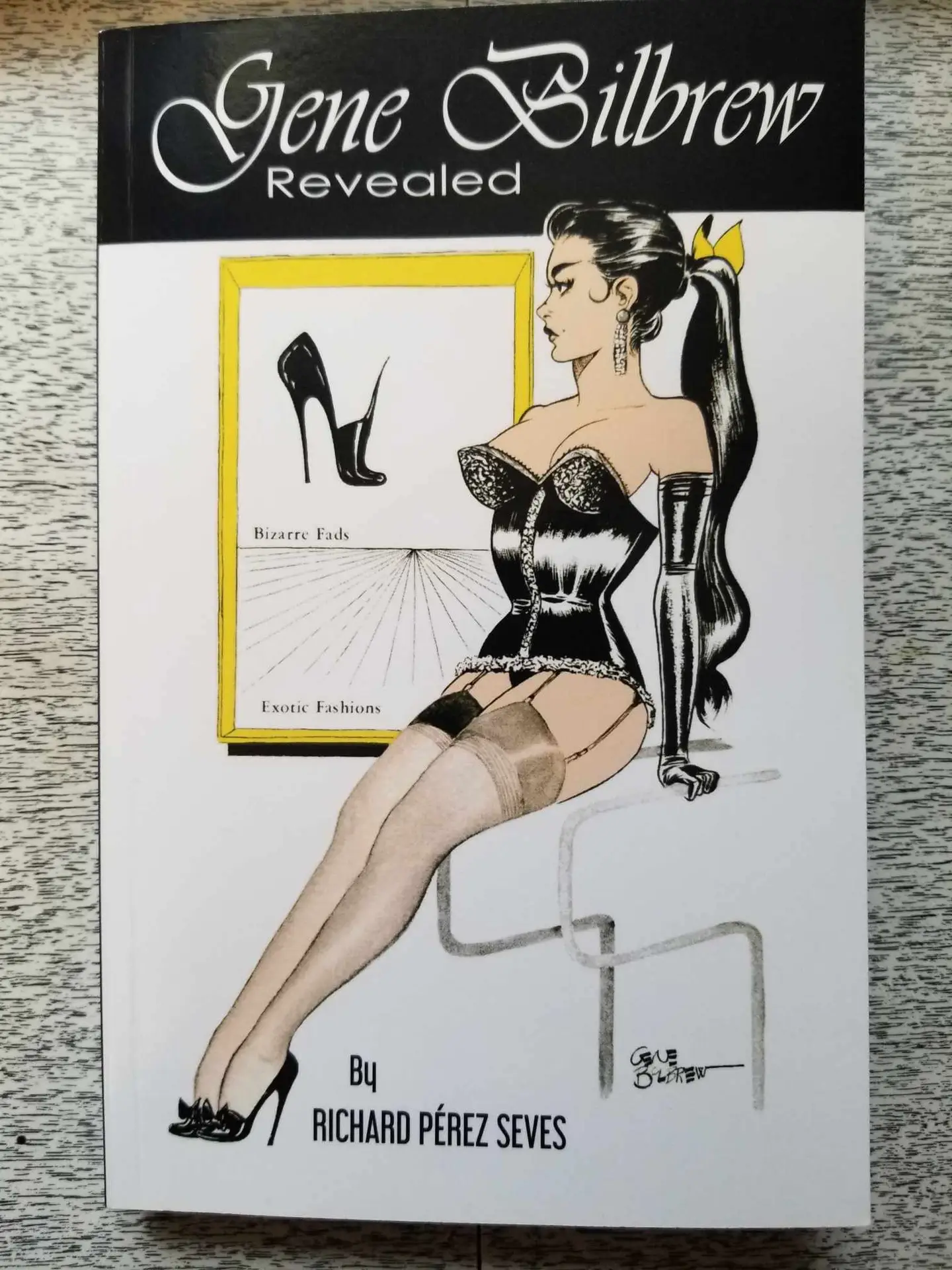
- Title: Gene Bilbrew Revealed
- Author: Richard Perez Seves
- Genre/Subject: Art history
- Publisher: Amazon
- Publication Date: 2021
- Start date: 8/13/24
- Finish date: 8/14/24
Review:
This was a well researched and well written biography of a fetish art pioneer. I wasn’t expecting this to be as good as it turned out to be so I’m doubly glad that I read it.
First of all let me say that I have been and continue to be a fetish art enthusiast, particularly from the golden age or pioneering age of the genre. Fetish art was known by many titles such as fashion art, glamour art, pin-up art to name a few. In 1950s America this was underground art as the Draconian obscenity laws forced the artists and publishers to keep a low profile. Pseudonyms and post office boxes were the orders of the day.
This is a biography of one of the best loved fetish art pioneers, Eugene Bilbrew who was known to me only as ENEG or Van Rod as he signed his artwork. Very little was known about Eneg (That’s Gene spelled backward) until the author started researching him. What a story it turned out to be.
Eugene Webster Bilbrew was born in Los Angeles in 1923. Bilbrew was an African-American who first pursued a career in music, performing with several jazz ensembles as a vocalist. He and his bandmates in the Ebonaires and the Basin Street Boys recorded many singles which are rare and valuable now. But then along came WWII and Bilbrew was in the army. After his discharge casting about for a career he went to a cartoon and illustrating school. He was classmates with both Steve Ditko (creator of Spider-Man and Doctor Strange) and Ernie Stanton. As the story goes Stanton noticed some bondage scenarios that Bilbrew had done in his sketch book and took him aside for a chat. Stanton had been working for some years on fetish art for the legendary Irving Klaw and mentioned that Gene may want to submit a portfolio. Bilbrew did, and thus was his career as an illustrator launched.
Irving Klaw ended up going to federal prison on obscenity charges even though there was no nudity in any of the magazines or photo shoots. After that it was over right? Well, no. Beginning in the 1960s most of the dodgy publishers and Times Square bookstores were mob controlled, and any policeman or politician that attempted to shut them down would get a visit from some Italian gentlemen. As a result of this increased freedom Bilbrew produced more and more to meet this increasing demand. Although it is generally agreed that Bilbrew’s finest work was created in the 1950s, with Island of Captive Girls considered his magnum opus, his early 1960s work was outstanding as well. I say early 60s because as the decade wore on his work began to deteriorate as he struggled with increasing alcohol and drug addiction.
By the 1970s Bilbrew was going downhill rapidly but still continued to illustrate for the even more sleazy publishers, with a focus on transvestism and female dominant themes which were enjoying a renaissance at the time. His work even then was still good, but nothing to compare with his 1950s output.
In 1974 one month short of his 51st birthday Bilbrew died in a plywood room in back of a Times Square men’s bookstore. Due to the mob connections the body was removed by individuals who were familiar with that sort of work and he has no grave marker or known last resting place. After a shadowy life he died a shadowy death. However, his art continues his legacy as a pioneering African-American artist. A renegade and an iconoclast Bilbrew will be remembered for his contribution to an under appreciated genre in the art world. Rest in Peace Gene.
This book made me want to: Remind everyone to vote so that those who want to take away freedom of expression are not making the decisions.
Overall rating: 



Readability: 



Plot: 



Other: 



 Excellent treatment of an unusual subject.
Excellent treatment of an unusual subject.


Leave a Reply